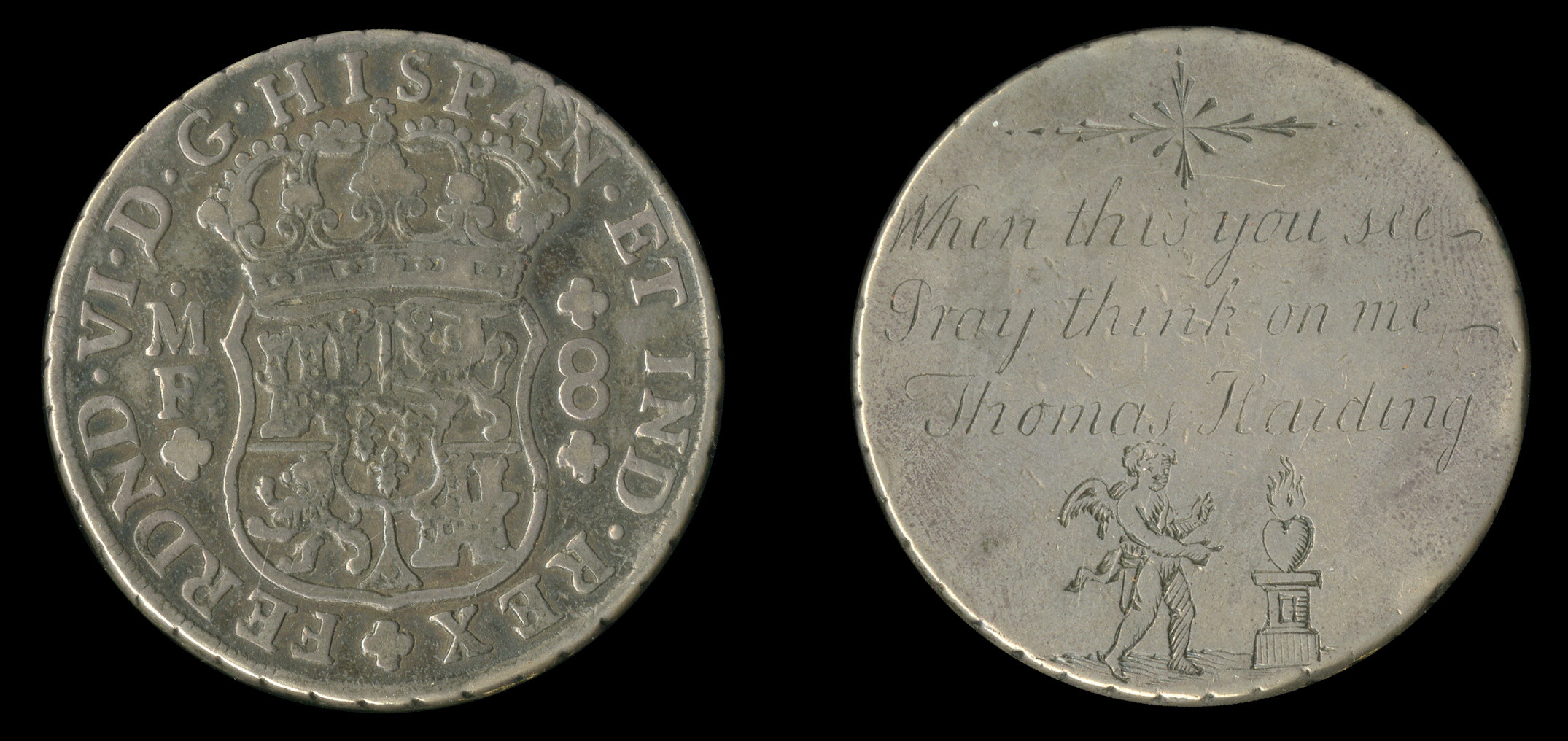With so many silver Pieces of Eight in global circulation, it is unsurprising that love tokens crafted from these coins survive today. In this British example, the reverse side of the coin is unchanged, revealing that it was minted in Mexico during the reign of Ferdinand VI (1746–59). The obverse side, however, has been rubbed smooth, and the new inscription shows the winged figure of Cupid carrying a bow and pointing at an altar of love.
Piece of eight love token
Ferdinand VI piece of eight, minted in Mexico, altered into a love token (courtesy of the Trustees of the British Museum).
Alejandra Irigoin and Bridget Millmore
Further reading
- Flynn, D. (1996) World Silver and Monetary History in the 16th and 17th Centuries (Aldershot: Variorum).
- Irigoin, A. (2018) ‘The rise and demise of the global silver standard’, Handbook of the History of Money and Currency (Singapore: Springer).
- Lin, M.H. (2006) China Upside Down: Currency, Society, and Ideologies, 1808–1856 (Cambridge, MA: Harvard University Asia Center).
- TePaske, J., and K. Brown (2010) A New World of Gold and Silver (Leiden: Brill).
- Von Glahn, R. (1996) Fountain of Fortune: Money and Monetary Policy in China, 1000–1700 (Berkeley, CA: University of California Press).





